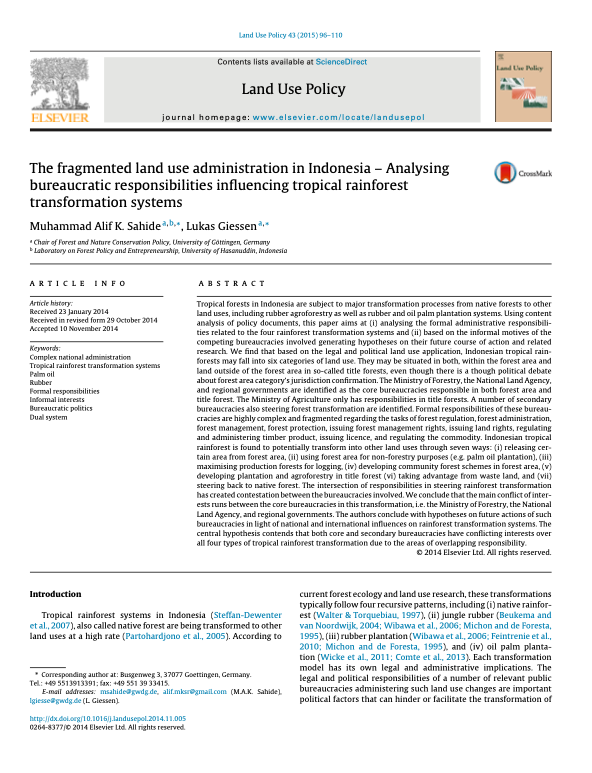Resource information
Tropical forests in Indonesia are subject to major transformation processes from native forests to other land uses, including rubber agroforestry as well as rubber and oil palm plantation systems. Using content analysis of policy documents, this paper aims at (i) analysing the formal administrative responsibilities related to the four rainforest transformation systems and (ii) based on the informal motives of the competing bureaucracies involved generating hypotheses on their future course of action and related research. We find that based on the legal and political land use application, Indonesian tropical rain- forests may fall into six categories of land use. They may be situated in both, within the forest area and land outside of the forest area in so-called title forests, even though there is a though political debate about forest area category’s jurisdiction confirmation. The Ministry of Forestry, the National Land Agency, and regional governments are identified as the core bureaucracies responsible in both forest area and title forest. The Ministry of Agriculture only has responsibilities in title forests. A number of secondary bureaucracies also steering forest transformation are identified. Formal responsibilities of these bureau- cracies are highly complex and fragmented regarding the tasks of forest regulation, forest administration, forest management, forest protection, issuing forest management rights, issuing land rights, regulating and administering timber product, issuing licence, and regulating the commodity. Indonesian tropical rainforest is found to potentially transform into other land uses through seven ways: (i) releasing certain area from forest area, (ii) using forest area for non-forestry purposes (e.g. palm oil plantation), (iii) maximising production forests for logging, (iv) developing community forest schemes in forest area, (v) developing plantation and agroforestry in title forest (vi) taking advantage from waste land, and (vii) steering back to native forest. The intersection of responsibilities in steering rainforest transformation has created contestation between the bureaucracies involved. We conclude that the main conflict of interests runs between the core bureaucracies in this transformation, i.e. the Ministry of Forestry, the National Land Agency, and regional governments. The authors conclude with hypotheses on future actions of such bureaucracies in light of national and international influences on rainforest transformation systems. The central hypothesis contends that both core and secondary bureaucracies have conflicting interests over all four types of tropical rainforest transformation due to the areas of overlapping responsibility.

